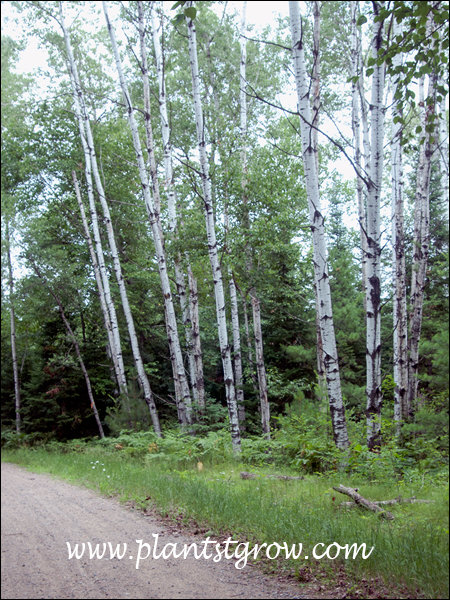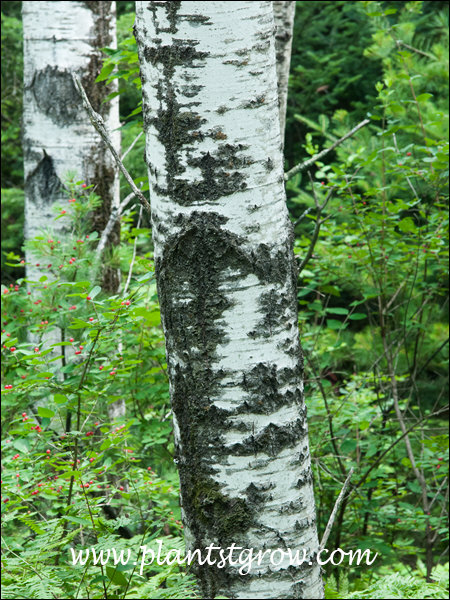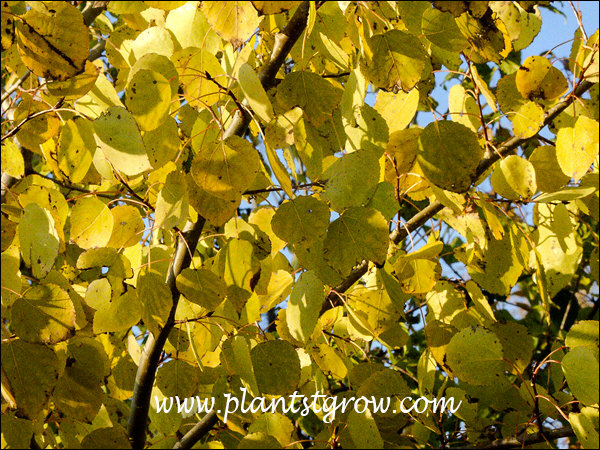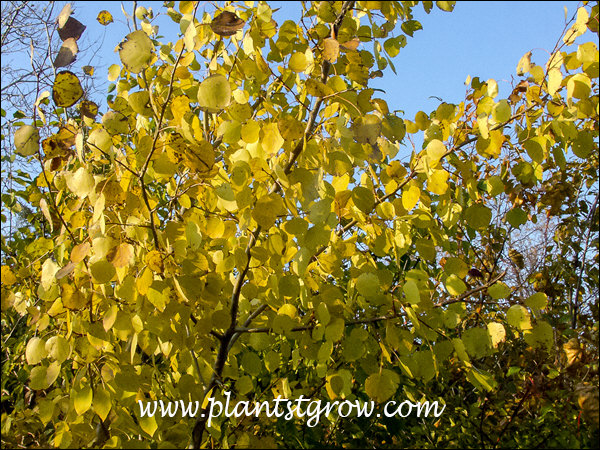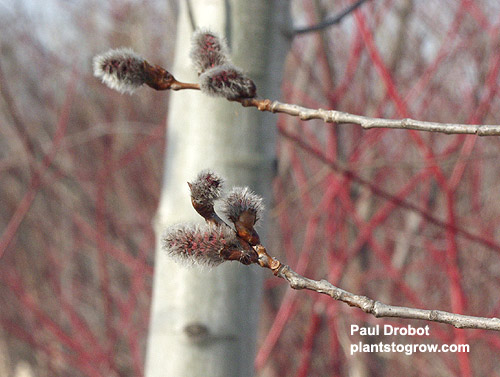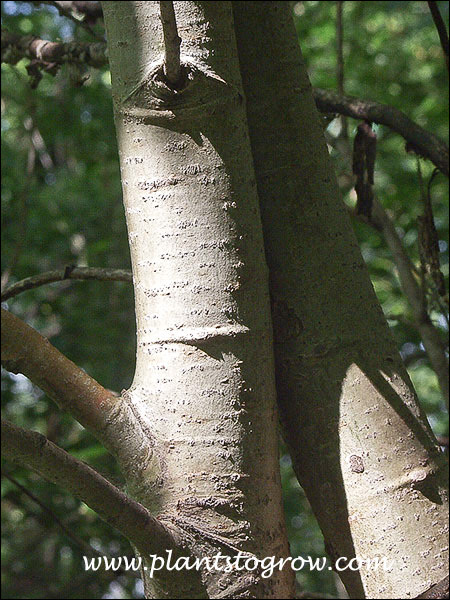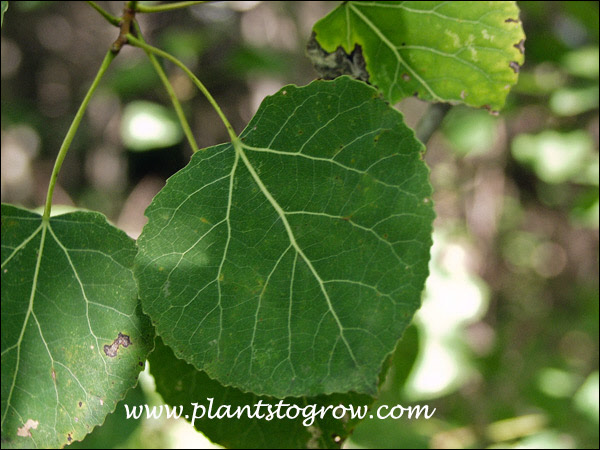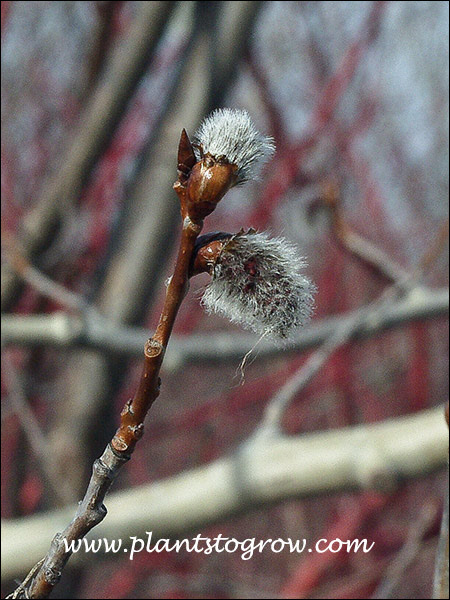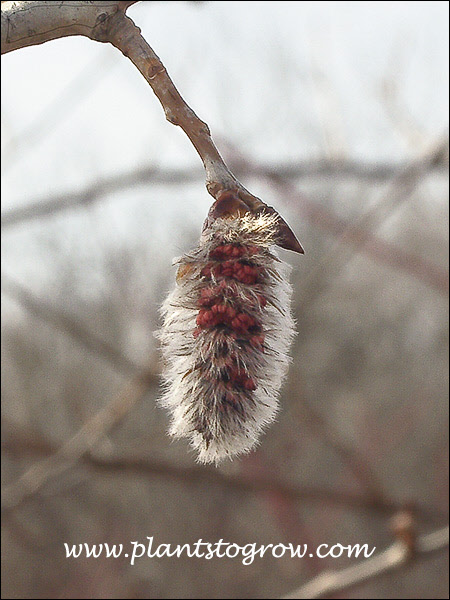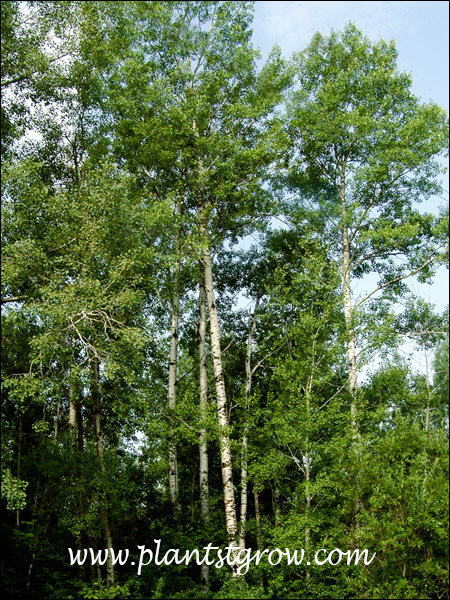| Description | Quaking aspen (Populus tremuloides) is a short-lived tree that grows fast, and is valued for its lumber, pulp, and wildlife food. It has limited ornamental value. |
|---|---|
| Pronunciation | (POP-yoo-lus)(trem-yoo-LOY-deez) |
| Plant Type | Trees Deciduous, Site author's observations |
| Hardiness Zone | 3-8 |
| Sunlight | full |
| Moisture | adaptable |
| Soil & Site | Very adaptable. One of the first trees in the northlands to colonize and stabilize a burned area. Tolerates moister sites. |
| Temperature | grows best in cooler regions |
| Flowers | dioecious (male and female trees), form catkins |
| Leaves | alternate, green, nearly circular, finely toothed leaves with a long flattened petiole and blazing yellow fall foliage |
| Stems | Bark smooth and gray-green when young older trunks are gray and furrowed. A white powder rubs off of younger bark. |
| Dimensions | 30-40' high |
| Propagation | Quickly spread by seeds and resprouts after being cut. I have walked through areas that have been logged a year or two earlier and the resprouting is so thick it is almost impassable. |
| Misc Facts | The wood is soft and used for carving and other wood crafts. The tree is a significant source of paper pulp. Many animals eat the bark and buds of this tree. It's not a good landscape plant for the urban yard unless you have room and want the plants to spread. Spreads to form identical clonal colonies (genet) of individuals called raments. AKA: trembling aspen, American aspen, Quakies, mountain or golden aspen, trembling poplar, white poplar, popple |
| Author's Notes | As a child, I used to love the sound of the rustling leaves from the trees on our property. The leaves had longer petioles than blades and were flattened, so even a gentle breeze would make them tremble and rustle. We could tell when the wind was coming through the forest because the rustling would get louder. The young Popple trees were very flexible, and we would climb them, swaying back and forth and moving from tree to tree like Tarzan. We called it "tree-to-tree combat." However, a Popple tree would occasionally break, and whoever was on it would come crashing down to the ground. Luckily, no one ever broke any bones. We also had a lot of fun chasing rabbits out of logger's piles of Popple branches. |
| Notes & Reference | #01-Manual of Woody Landscape Plants (Michael Dirr) , #39-The Natural History of Trees (Donald Cultrose Pattie) , #66-Trees of Eastern and North Central USA and Canada (Harlow) |

Cart
